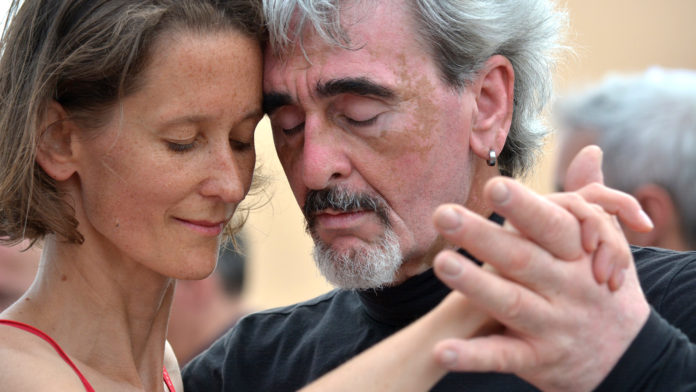Opening up the dance floor to people with Parkinson’s sparks something unexpected. Something about the music, the rhythm, and the spontaneity seems to unlock movement.
Dancing with Parkinson’s is a Toronto-based charitable organization that hosts dance therapy classes for people with Parkinson’s. The anecdotal results are so striking that researchers at York University have launched scientific studies to try to understand how dance affects the brains of participants.
Sarah Robichaud, founder and instructor at Dancing with Parkinson’s, has seen participants who struggle to walk into class with an assistive device spontaneously begin waltzing across the dance floor with no assistance.
Parkinson’s is a neurodegenerative disease that progressively causes loss of balance, stamina and coordination, and clear speech. While motor circuits remain intact, damaged pathways in the brain block access. While medication can help with tremors, there is no cure.
Most people with Parkinson’s eventually need to actively think about each movement. The goal of dance therapy is to make movement come naturally.
Until recently, science couldn’t begin to explain why dance seemed to help signals from the brain connect to the body. York University neuroscientist Joseph DeSouza is changing that, with the help of volunteers from Dancing with Parkinson’s.
DeSouza scans the brains of study participants before and after a dance class. After a one-hour dance class, DeSouza found an increase in alpha brain waves, which may explain the improvements in balance and movement movement. Physical tests also help assess changes in coordination and gait. His future studies will look at whether dance provides a long term neuroprotective effect, or even builds new neuropathways to movement to replace those that are damaged.
Unlike other forms of exercise to build strength and stamina, dance has the added benefit of being a demanding exercise for the brain, says DeSouza. The stimulus of the music and coordination to the rhythm is like brain training through dance.
Regardless of the science, participants are already noting physical and emotional boosts from their dance classes. The interactions with other people and the sense of community that the classes provide can be key to coping with a chronic illness like Parkinson’s.
UPDATE: Interested in trying a Dancing with Parkinson’s session yourself? Or in referring dance therapy to your patients? Researcher Rachel Bar and Canada’s National Ballet School invite you to join them for two events in April 2017 in Toronto, and via livestream – mark the dates!








































